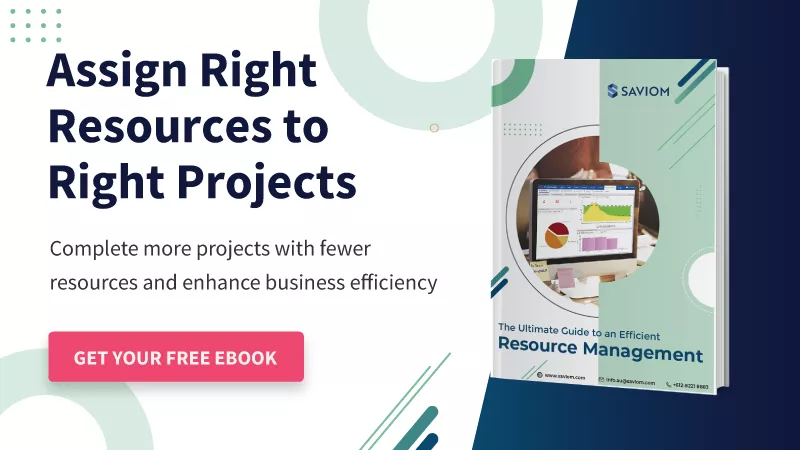Every business aims at creating a high-performance team. Their efficiency drives the success of the organization and economic growth.
When these high-performing teams are at their productive best, they utilize their competencies to their maximum potential.
What happens when the team is demotivated and it is affecting their productivity? How will this impact the overall business?
A recent study by Hubspot revealed that low productivity costs employers around USD 1.8 billion dollars annually. A decline in productivity stunts the GDP or the economic output in comparison to the number of people.
Low productivity indicates that resources are not utilizing their skills and competencies to their maximum potential which increases company’s resourcing costs.
This can be due to two reasons- one, because managers allocate low-priority or mundane admin tasks to highly-skilled workforce. For two, employees are not motivated or not driven to work towards the company’s goals and objectives.
It is a major challenge for the business growth and must be controlled at the appropriate time. This blog takes you through ways in which your business is affected by poor productivity and tips to course correct them.

Let us first understand the relationship between this two:
The relationship between productivity and business growth
When employees are productive, they are either doing more work in less time or taking lesser hours to accomplish work. This helps in reducing operational costs. As a result, producing the same output requires less workforce, which in turn increases profitability.
Additionally, improved customer satisfaction gives a competitive edge and offers more opportunities for growth. One will observe increased employee engagement and improvement in morale that will eventually reduce employee burnout.
In a nutshell, high productivity ensures business profitability and employee retention thereby making your business more sustainable.
How does low productivity impact the business?
Reduced profitability
Lower work rate (or productivity) results in poor performance of employees which ultimately affects the quality of deliverables. When the end-users are not satisfied with the product, profitability will go down.
Moreover, time and cost spent on the resources that are not performing at their best also reduce the profit margins. This is because the production costs exceed or is almost nearer to the billing costs. Productivity is, therefore, a major deciding factor in the profit margins for the organization.
Employee disengagement and lower team morale
When productivity spirals down, it influences the team morale and engagement. Managers will start noticing a decline in initiatives taken by their employees. Besides, employees will be least interested in resolving project issues.
With employee disengagement comes lowered team spirit. When work is not progressing well, or when the team members do not feel valued, it will affect their performance. This may eventually lead to their separation from the organization.
Sub-optimal utilization of the workforce
Even if employees are 100% utilized, it does not imply that they are productive. There is a chance they are spending their time on mundane admin tasks or non-billable activities.
This will further reduce their productivity. The other employees will also be at risk of being over-utilized on high-priority billable tasks.
Over-utilization is another major cause of reduced work-rate. Thus, the low productivity of one employee causes a domino effect on the entire team leading to overall poor performance.
Read More: How to Measure Different Types of Resource Utilization
Lack of motivation and creativity
Innovation is the key to gain a competitive advantage in the business industry. If your employees’ are not working at their best due to low productivity, they will not be motivated to come up with creative ideas. More so even, they will not be able to provide solutions to the existing problems.
A lack of motivation will hamper the projects’ quality or, worse, bring them to a grinding halt.
Delays in project timelines
Poor productivity causes a ripple effect of inefficiency in the organization. Beginning with lowered team spirits to a team of unmotivated employees, eventually, it leads to delays in meeting deadlines. Productivity essentially means doing more in less time. In situations when it’s declining, the project’s deadlines will be missed dissatisfying the clients.
When your firm fails to deliver a project on time, your clients will look for alternatives for new work. The competitors will take advantage of the situation which will cost you the loss of an existing client.
Workplace toxicity and high employee turnover
An external influence is imperative when employees are unproductive. However, if their managers are also reacting unfavorably, it will make the work environment toxic. A study from SHRM reveals that nearly one-fifth of the employees have left their jobs in the last 5 years. The reason for that was a toxic work culture.
This study clearly explains how workplace toxicity and employee turnover are correlated. Your current employees will leave the organization. Also, when the word about your toxic work culture goes out, you are scaring away the prospective potential.
Now we are aware of how low productivity can cause a plethora of problems for your business. Below are some ways to enhance it.
How to enhance employee productivity
Do not spend time on unnecessary meetings
A study conducted by Atlassian reveals that the workforce spends 31 hours on unproductive meetings every month.
That is, on average, one hour each day goes by attending fruitless meetings. This not only wastes their time but also breaks their momentum, causing distractions.
Managers must therefore ensure that they set an agenda before scheduling any meetings. Only if there is a pressing need for it, they should block everyone’s calendars. They can also switch to asynchronous modes of communication to save time. This will keep the employees focused on the work at hand helping them to mitigate low productivity issues.
Provide career-building opportunities to the employees
Organizations have become employee-centric. After all, their workforce is the asset that drives their profitability and success.
Employees need to feel valued in order to thrive and make valuable contributions to the firm. Thus managers must be aware of everyone’s strengths and weaknesses and provide them skill-building opportunities accordingly. Based on the skillset, organizations should form an individual development plan (IDP) for every employee and fuel their professional growth.
It is difficult to keep track of everyone’s expertise and get their skills updated on a regular basis.
Resource-centric dashboards within a resource management tool let employees fill their skills, competencies, and certifications in real-time. Managers can make use of these dashboards to access each profile from a unified platform.
Read More: Project Resource Management: An Ultimate Guide on How to Master it
Foster a high-performance, innovative culture
Studies suggest that 88% of employees believe that a strong company culture is key to business success. The decision-makers should foster an innovative culture and motivate employees to voice out their ideas. When employees are heard and valued in their workplace, they are likely to perform well and stay more productive.
Along with innovation, performance-driven culture helps you ensure that everyone is working to the best of their abilities. Their contribution will help you reach the company’s strategic goals.
A culture that drives you to perform well and recognizes your talent is the recipe to form a highly-productive team.
Use a productivity score chart
Conveying the company’s goals and enabling employees to work towards it is half the battle. The next step is to keep a record of everyone’s performance and productivity. Investing in a tool that lets employees fill their timesheets against their projects is an easy way out.
Managers will then have an idea of how much time the employees are spending on billable projects and BAU tasks. If the latter outweighs the billable hours, managers can take corrective actions. If employees are taking excess time for a simple or short-duration task, a one-on-one session can be arranged. One can conduct a review and understand the root cause.
Rewarding employees or recognizing them for their hard-work on a regular basis will keep them driven towards the firm’s goals.
Avoid allocation of under or over-skilled resources
Ensuring uniform allocation of workload is of utmost importance to prevent employee burnout, people ending up on the bench, and discrepancies. When every employee is optimally utilized against their capacity and skill set, they do not feel stressed out. This will keep their productivity levels always high.
Moreover, ensuring an adequate talent pool will avoid a large bench of mismatched skillsets saving your bottom line. Managers must therefore plan the projects in advance and take hiring measures well ahead of time to maintain the skill quality.
Utilizing your employees’ skills to their maximum potential will increase employee productivity and retention rate.
Read More: Resource Allocation: A Guide on How to Apply it to Project Management
The round-up
An American entrepreneur Tim Ferriss said that ‘Focus on being productive rather than being busy.’
Keeping this adage in mind, managers must take necessary measures to maintain the productivity levels of their employees at their best. Ensuring maximum billable utilization and a high-performance culture are some of the ways to do so.
This blog has highlighted the effects low productivity can have on your business and some practical measures to cope with it. Managers can leverage these tips and protect their firms from facing the negative impact of poor productivity.
SAVIOM Solution
SAVIOM is the market leader in providing an Enterprise Resource Capacity Planning solution. With over 20 years of experience as a market leader, Saviom is actively used by many highly-esteemed global companies. Some of the components of the tool include enterprise resource management, professional service automation, and workforce planning software.












